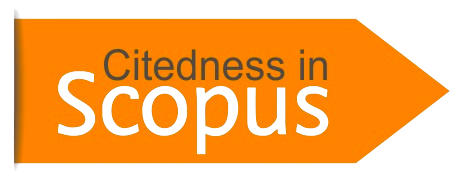Tipe Parental Mediation dan Adiksi Internet Siswa Kelas V SD X Bandung
DOI:
https://doi.org/10.15575/psy.v5i2.3310Keywords:
internet addiction, parental mediation, primary school studentAbstract
The purpose of this study was to examine the correlation between parental mediation and addiction in late childhood. Participants of this research were sixty 5th-grade primary school students in Bandung. The instruments were questionnaire compiled based on the theory of Parental Mediation from Livingstone (2008) and Internet Addiction from Griffith (2015) and depth interview on some parents. The data was analyzed using the Spearman Rank. The findings showed that there was a correlation between parental mediation and internet addiction. Parents used mediation behavior to reduce children's internet activity. However, the children perceived it has no impact on them.
References
APJII. (2014). Penggunaan internet pada jenjang sekolah dasar yaitu persentasenya adalah 1,2% . Diakses dari https://apjii.or.id.
Berk, L. (2012). Development through the lifespan: Dari prenatal sampai remaja. Yogyakarta: Pustaka Pelajar.
Chng, G. S., Li, D., Liau, A. K., & Khoo, A. (2015). Moderating effects of the family environment for parental mediation and pathological internet use in youths. Cyberpsychology, Behavior, and Social Networking, 18(1), 30–36. doi.org/10.1089/cyber.2014.0368
Griffiths, M & Kuss, D. (2015). Internet addiction in psychotherapy. Palgrave Macmillan UK.
Griffiths, M. (2000). Does Internet and computer “addiction†exist? Some case study evidence. Cyberpsychology & Behavior, 3(2), 211–218. doi.org/10.1089/109493100316067
Jannah, Miftahul.(2015). Tugas-tugas perkembangan pada usia kanak-kanak. Banda Aceh. Fakultas Psikologi UIN Ar-Raniry
Kalmus, V., Blinka, L., & Ólafsson, K. (2015). Does it matter what mama says: Evaluating the role of parental mediation in European adolescents’ excessive internet use. Children and Society, 29(2), 122–133. doi.org/10.1111/chso.12020
Khasanah, A. N., Damayanti, T., & Sirodj, D. A. N. (2017). Gambaran negative automatic thoughts pada remaja korban bullying di Sekolah Menengah Pertama Kota Bandung. Psympathic : Jurnal Ilmiah Psikologi, 4(2), 239. doi.org/10.15575/psy.v4i2.1698
Leung, L., & Lee, P. S. N. (2011). The influences of information literacy, internet addiction and parenting styles on internet risks. New Media and Society, 14(1), 117–136. doi.org/10.1177/1461444811410406
Leung, L & Liang, J. (2015). Media addiction, Journal . The International Encyclopedia of Media Effects.
Li, Y., Zhang, X., Lu, F., Zhang, Q., & Wang, Y. (2014). Internet addiction among elementary and middle school students in China: A nationally representative sample study. Cyberpsychology, Behavior, and Social Networking, 17(2), 111–116. doi.org/10.1089/cyber.2012.0482
Livingstone, S., & Helsper, E. J. (2008). Parental mediation of children’s internet use. Journal of Broadcasting and Electronic Media, 52(4), 581–599. doi.org/10.1080/08838150802437396
Livingstone, S., Mascheroni, G., Dreier, M., Chaudron, S., & Lagae, K. (2015). How parents of young children manage digital devices at home: The role of income, education and parental style. EU Kids Online, (September), 3–25. doi.org/10.1136/bjophthalmol-2011-300110
Sudjana. (2015). Metoda statistika. Bandung: Tarsito.
Sugiyono. (2014). Metode penelitian kuantitatif kualitatif dan R&D. Bandung: Alfabeta.
Wu, C. S. T., Wong, H. T., Yu, K. F., Fok, K. W., Yeung, S. M., Lam, C. H., & Liu, K. M. (2016). Parenting approaches, family functionality, and internet addiction among Hong Kong adolescents. BMC Pediatrics, 16(1), 1–10. doi.org/10.1186/s12887-016-0666-y
Young, K. S. (1999). Internet addiction: Symptoms, evaluation, and treatment. Innovations in Clinical Practice (Volume 17), 17(Volume 17), 19–31. doi.org/10.1007/s10879-009-9120-x
Young, K. (1998). Caught in the net: How to recognize the signs of internet addiction and winning strategy for recovery. New York.
Downloads
Additional Files
Published
Issue
Section
Citation Check
License
The author whose published manuscript approved the following provisions:
1. The right of publication of all material published in the journal / published on the E-Journal of Psychology website is held by the editorial board with the knowledge of the author (moral right remains the author of the script).
2. The formal legal provisions for access to digital articles of this electronic journal are subject to the terms of the Creative Commons Attribution-ShareAlike license (CC BY-SA), which means that the Journal of Psychology reserves the right to save, transmit media / format, manage in database form, , maintain, and publish articles without requesting permission from the Author as long as it continues to include the name of the Author as the owner of Copyright.
3. Printed and published print and electronic manuscripts are open access for any purposes. In addition to these objectives, the editorial board shall not be liable for violations of copyright law.
Â






